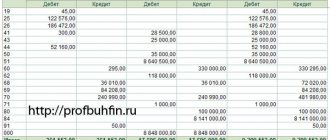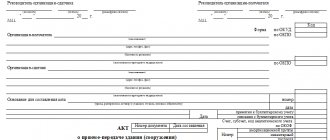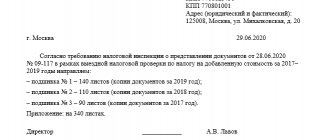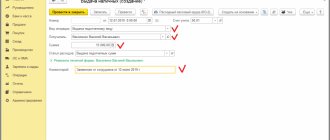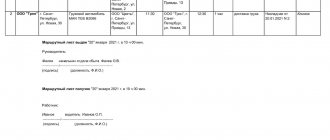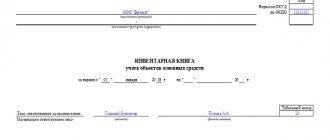Cash documents
Cash documents include the following:
- Receipt order;
- Withdrawal slip;
- Journal of registration of papers for receipts and expenses;
- Cash book;
- A book that records money issued and received by the cashier;
- Advance reporting;
- Payroll;
- Cashier-operator reporting;
- Data on cash register counter readings to profit;
- A journal kept by a cashier-operator.
Let's look at each of them in more detail.
Cash orders
There are two types of orders: for receipts and for expenses. As you might guess from the name, receipts are used when money is received, and expenses are used when money is issued. The order is drawn up in one copy by an accounting employee and signed either by the chief accountant or an authorized employee.
A check is attached to the receipt, which must be signed by the cashier and accountant. Also, it must be affixed with the organization's seal. It is issued to the person who deposited money into the cash register.
Read more about the receipt order in the article.
Read more about the expense order in the article.
Required cash receipt details in 2021
Download the table of check details: 54-FZ strictly requires them to be printed on every document that confirms the sale. The table contains detailed comments for all use cases. It's free.
Get the table for free!
Register in the online document printing service MoySklad, where you can: completely free of charge:
- Download the full table of required details of a cash receipt and BSO
- Fill out and print any document online (this is very convenient)
The following is an abbreviated list of receipt details that must be printed on each document confirming the sale:
- Document's name.
- Serial number of the document for the shift.
- Date, time of calculation.
- The place, address where the calculation is carried out depending on the place where it is carried out (postal address of the building, or the name, number of the vehicle and address of the organization (IP), or website address).
- Name of the organization (last name, first name, patronymic individual entrepreneur) and TIN.
- The applied taxation system.
- Payment attribute (receipt, return of receipt, expense, return of expense).
- Name of goods, works, services, their quantity, unit price, cost, VAT rate (except for cases when the calculation is made by a user who is not a VAT payer or exempt from VAT, as well as when making payments for goods not subject to VAT).
- Calculation amount with separate indication of VAT rates and amounts.
- Form of payment (cash, electronic payment), amount of payment in cash and (or) electronically.
- The position and surname of the person who made the settlement with the buyer, issued the cash receipt and issued it to the buyer (with the exception of settlements made through automatic devices, including those used for non-cash payments on the Internet).
- CCP registration number.
- Serial number of the fiscal drive.
- Fiscal sign of the document.
- Serial number of the fiscal document.
- The address of the OFD website, where in the future it will be possible to check the fact of recording this calculation and the authenticity of the fiscal attribute.
- The buyer's phone number or email address (if the cash receipt is sent to him in electronic form).
- Email address of the sender of the cash receipt in electronic form (in case of transfer of the cash receipt to the buyer electronically).
- Shift number.
- Fiscal sign of the message (for cash receipts stored in a fiscal storage device or transmitted by the OFD).
- QR code.
- FDF version number (for electronic form).
- Indicator of the payment method (may not be included in the printed form in case of full payment, and in an electronic check - in case of full payment and only in FFD 1.05).
- Code of the fiscal document form (for electronic form).
- Product code. This detail includes an identification code for goods that are subject to mandatory labeling.
- Excise tax amount (for excisable products).
- Registration number of the customs declaration (when paying for imported goods)
What should be encrypted in the QR code on a cash receipt according to the new rules? The law says that it must contain information about the purchase (date and time of payment, serial number of the fiscal document, payment attribute, settlement amount, serial number of the fiscal drive, fiscal attribute of the document).
The detail “Product code” must be indicated after three months after the entry into force of a legal act that introduces a mandatory requirement for a particular product.
Let us remind you that when making payments between two companies, two individual entrepreneurs, or between an organization and an individual entrepreneur, you need to use cash register in two cases. The first is the acceptance and withdrawal of cash. The second is the acceptance and issuance of non-cash funds using an electronic means of payment with its presentation (for example, using a plastic card).
In these cases, the check will need to indicate:
- name of the buyer or client (company name or full name of the entrepreneur),
- TIN of the buyer or client.
This check contains the following details:
- “Retail facility” is the name of the store.
- “Cash receipt” is the name of the document.
- Arrival is a sign of calculation.
- “Carrot” is a product nomenclature.
- Quantity of goods.
- Unit price.
- Cost of goods.
- % VAT.
- VAT amount.
- Total settlement amount.
- Payment form: cash with amount.
- The form of payment is by card, also with the amount.
- Information about the seller's tax system.
- Separately the total amount of VAT.
- Full name of the cashier and his position.
- Shift number.
- TIN of the merchant that issued the check.
- ZN – serial number of the cash register.
- Name of the organization that issued the check.
- Settlement address.
- Website address where you can check your receipt.
- Serial number of the check.
- Date and time the check was issued.
- CCP registration number.
- Serial number of the fiscal drive.
- Fiscal receipt number.
- Fiscal data sign.
- QR code for checking a receipt.
All these data are mandatory details for an online cash register receipt. If at least one of them is missing on the check, then by law the check is considered invalid, and the entrepreneur will have to make every effort to prove to the inspection authority the use of the online cash register, otherwise he will be fined for non-compliance with the new law. More details about the check details required by 54-FZ can be found in the text of the law itself. At the same time, even the buyer himself can control the compliance of the details on checks with the law, so not only entrepreneurs need to be aware of what details should be on a cash receipt.
The “Product code” detail is a mandatory detail of a cash receipt. But the rules for recording it are defined only for labeled products.
Attention! Decree of the Government of the Russian Federation No. 521 of April 16, 2020 establishes a delay until April 20, 2021 by indicating the product code in the cash receipt and BSO for courier and postal delivery, including cash on delivery. This applies to legal entities and individual entrepreneurs. Also, a cash register receipt and BSO may not contain a product code if:
- The settlement is not related to the transfer of goods to the buyer, incl. when accepting prepayments, advances, in a pawnshop,
- The buyer returns a product with a damaged or lost marking code,
- In the FD formats approved by the Federal Tax Service, there are no rules for the identification code for its inclusion in the Product code attribute,
- Goods produced before the start of mandatory labeling are withdrawn from circulation.
Important! Individual entrepreneurs using the PSN, simplified tax system and UTII, with the exception of those who trade in excisable goods, may not indicate the name and quantity of goods or services purchased on their receipts. This relief for small businesses is given until February 1, 2021 (Federal Law dated July 3, 2016 N 290-FZ). After this date they must operate like all other businesses. Read more about the dates when you will need to start indicating goods on your receipt, as well as about the postponement of online checkouts until 2021 here >>
A number of new details will soon be required on checks. The changes will affect entrepreneurs who work on a simplified basis with the “income” object. Paragraph 13 of Presidential Decree No. 204 dated 05/07/2018 states that from 2021 such taxpayers will be able not to submit a declaration. While this is a draft law, they plan to adopt it before July 1, 2021. Therefore, the new check details are also in the form of draft amendments to the Federal Tax Service order dated March 21, 2017 No. ММВ-7-20/ [email protected] (the editorial office of the newspaper “Accounting. Taxes. Law” has a draft amendment).
After the bill is adopted, the tax office will calculate the amount of tax payable on transactions that go through online cash desks. The following details will be added to the check:
- The “Expense” detail will be added for expenses under Article 346.16 of the Tax Code.
- Details “Contributions to the individual pension fund” – for pension contributions.
Such details can be reflected in the receipt only after updating the cash register. It will need to be reflashed.
Cash book
This book is necessary in order to take into account the issuance of money and its receipt. All pages of the book must be numbered, and the book itself must be laced and stamped. The last page records the total number of sheets of the book.
Each page is divided into two parts. One, which has a horizontal line, is filled in as the first copy, and the other as the second. Both copies have the same number. The first remains in the book, and the second is detachable, it is a reporting cash document.
Recording of cash transactions begins on the front side of the permanent part after the column “balance at the beginning of the day.” First, the sheet is folded along the cutting line, placing the tear-off sheet under the sheet that remains in the book.
Read more about maintaining a cash book in the article.
The procedure for conducting cash transactions
[ads-pc-3] [ads-mob-3]
Directive of the Bank of the Russian Federation No. 3210-U dated March 11, 2014 determines how to properly maintain a cash book.
It must be the only one in the organization, regardless of the taxation systems used, with the exception of companies that act as payment agents or bank payment agents due to the validity of agreements of the same name. In accordance with the law, they must organize separate accounting of their own funds and income under agency agreements.
If the company has a separate division, it must also maintain a separate cash book. Moreover, if the division has its own balance sheet, then copies of the ledger sheets, certified by seals and signatures during the reporting periods, are transferred to the parent company. If it is not allocated to a separate balance sheet, then certified copies remain in the structural unit itself, and the originals are sent to a higher organization.
For individual entrepreneurs, a simplified procedure for conducting cash transactions is possible, which, in the case of drawing up special registers (book of income and expenses), allows not to maintain this document.
The cash book is filled out for a year.
On weekends and holidays (if they are not working days according to internal regulations), as well as on days when there were no cash transactions, you do not need to enter information into the book.
Advance reporting
This reporting is needed in order to take into account the money that is issued for business expenses. This document is drawn up by the accounting employee and the reporting employee in one copy.
The reverse side of the report should include a list of documents that can confirm that the expenses were incurred. These can be various receipts, transport tickets, and so on. Also, these documents must be attached to the report and numbered in the sequence in which they are listed in the reporting.
Where should I put it?
The statement remains inside the bag, the invoice and receipt, included in a single set, remain outside.
The sequence of filling out the statement for the bag:
- filling of the collector's bag is carried out by the cashier (materially responsible person), he also draws up a transfer sheet, records information about collection and the number of the bag;
- after the arrival of the collectors, who check the compliance of the cash indicated in the statement, the suitcase is sealed so that the seal cannot be broken without clear signs of its unauthorized opening;
- the bag is opened only by authorized persons.
Cashier's report
This reporting is prepared by the cashier-operator. He enters information about the cash register readings and revenue for the day. Cashiers must prepare such a report every day. After drawing up the report, it is signed and, together with all the proceeds, it is handed over to the manager of the company.
If the company is small, cashiers hand over money to collectors. When transferring funds, the appropriate bank documents must be drawn up.
More complete information about the cashier's report can be found in the article.
Fill out the KM-6 form
The report in form KM-6 is drawn up in 1 copy. After displaying information about the company (name and telephone number, KPO, INN) and indicating the used cash register model (name, serial and registration number), it shows the revenue for the shift according to the summing counters at the beginning and end of the working day.
In addition, to fill out the KM-6 form, you need to know the amount of cash returned to customers (when returning goods), and for incorrectly punched checks, so that the final amount of cash according to the report reflects the actual cash revenue received by the company for the shift. This report must be signed by the senior cashier and the company manager.
You can find KM-6 forms on our website:
A sample will help you fill out the KM-6 form, which can also be downloaded on our website:
Tips for filling
- If the amount must be indicated in words, it must be done in capital letters. Kopecks are written in numbers.
- Documents can be filled out either on a computer or manually.
- Incorrectly filled in information in cash register papers can be corrected. This is how it is done. An incorrect entry is crossed out with a neat line. The correct entry is made above or next to it. Here they write “believe what is corrected.” The company manager and chief accountant must sign next to this entry.
- If a document contains blots, clerical errors or corrections by a proofreader, it is considered invalid.
How to fill out the KO-4 cash book on a computer?
Filling out form No. KO-4 on a computer can be done using an accounting program or an office application (for example, Excel). After entering the necessary information into the cash book on the PC in accordance with the algorithm we discussed above, the cashier needs to:
- print all pages of the cash book;
- sign 2 copies of the document and take it to the accountant, taking with you the PKO and RKO, issued for the day.
Every year, all printed sheets of the cash book should be stitched and numbered (in the case of filling out the form manually, as we noted above, they must be stitched and numbered initially), and then a scheme for filling out the cash book should be sent to the chief accountant and manager for signature
Firms have the right to fill out and maintain a cash book without printing it out (clause 4.7 of the Instructions), generating the corresponding document entirely in electronic form. This feature can be used if the cash book compiler has at his disposal technical means that guarantee:
- protection against unauthorized access;
- no errors when entering data into the cash book;
- protection against information loss.
Electronic samples of cash books must be signed with an electronic signature that meets the requirements of Federal Law No. 63 of 04/06/2011. A virtual sample of a cash book may differ from form No. KO-4 in appearance, but the columns in it will be the same.
See also “Procedure for making corrections to the cash book (nuances)” .
How long should you keep cash documents?
In accounting and tax legislation, there are different opinions regarding the storage period for cash documents.
In accordance with tax law, cash records must be kept in the company's archives for four years. Accounting legislation states that such papers must be kept for at least five years. The Ministry of Culture has also established a storage period for documents of five years.
Thus, based on the maximum period, cash register papers must be stored in the archive for at least five years. It is worth considering that documents can only be destroyed if an audit has been carried out over these five years. If it was not there, the papers cannot be destroyed even after five years.
The storage periods for cash documents must be observed, since the following fines are provided for their violation:
- For employees responsible for storage – from two to three thousand rubles;
- For citizens - from two hundred to three hundred rubles.
Similar articles
- Receipt cash order
- Accounting of cash transactions
- Journal of registration of incoming and outgoing cash orders
- The procedure for documenting cash transactions
- Cash book (form and sample)
Payment statement. Form T-53
Payroll (form T-53) is a document that is used when paying wages to an employee of an enterprise. The document indicates the total amount to be issued in cash to the employee.
Each payroll is prepared at the end of the reporting period (usually a month) by an authorized person. As a rule, this person is an accounting employee, namely the cashier of the enterprise.
The payroll form is unified and has a code according to OKUD 0301011. The enterprise has the right to independently develop an easy-to-use form of this accounting document, using the T-53 form as a template.
This document has the necessary details for filling out, such as: date of the document, date of preparation, full name of the person responsible for compiling the statement, reporting period and amount of accrued wages.
At the end of each payroll, the amount of actually paid wages and the deposited amount (unpaid funds due to certain circumstances: vacation, sick leave, business trip, etc.) are indicated. O should be placed opposite the names of employees who have not received wages. According to the official form T-53, this is column number 23. The cashier of the enterprise has the right to register this mark, because It is he who is responsible for issuing funds to the employees of the enterprise. If the employee has received his salary, he needs to put his signature in column number 5, which confirms the receipt of cash.
At the very end of filling out the payroll, the responsible person, namely the cashier of the enterprise, must indicate the total amount in words that he gave to the employees, as well as the amount that remained marked “Deposited”. The cashier must confirm these records with his signature. Only after this is the document submitted to the chief accountant for verification. Further, if no comments are made, the payroll is signed by the chief accountant of the enterprise.
All payrolls of the enterprise are registered in the journal according to the T-53a form. This document is issued for a period of one calendar year, but is stored for five years.
The disadvantage of a payroll is that the information displayed in the document is not confidential.



